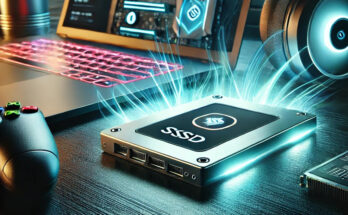Addressing White Spots on Your Laptop Screen: If you’ve encountered white spots on your laptop screen, you’re certainly not alone. This common issue can arise from various factors, including dead pixels, pressure-induced damage, and moisture exposure. In this article, we’ll explore effective tips and techniques to eliminate these bothersome white spots and restore your laptop screen to its original clarity.
Understanding the Causes of White Spots: Before delving into the methods for removing white spots, it’s crucial to comprehend what leads to their occurrence. There are several common culprits:
1. Dead Pixels:
- Dead pixels represent one of the primary causes of white spots on laptop screens. These pixels have ceased functioning and can no longer render accurate colors. Dead pixels may result from various factors, including manufacturing defects and physical harm.
2. Pressure Damage:
- Another prevalent cause of white spots is pressure damage. This occurs when excessive pressure is applied to the laptop screen, such as closing the laptop too tightly or placing heavy objects on it.
3. Moisture:
- Moisture exposure can also give rise to white spots on laptop screens. This is especially true if the laptop has been subjected to high humidity or accidental spills.
Tips and Techniques for Eliminating White Spots: Now that you have insight into the root causes of white spots, let’s explore some effective methods for their removal:
Method 1: Employ Pixel-Fixing Software:
- If dead pixels are responsible for the white spots, you may have success in resolving them by using pixel-fixing software. These applications work by rapidly cycling through various colors on the screen, attempting to unstick the affected pixels. Numerous pixel-fixing software options are available, ranging from free to paid.
Method 2: Apply Gentle Screen Pressure:
- For white spots resulting from pressure damage, you can attempt to rectify the issue by applying gentle pressure in the opposite direction. This may aid in redistributing the liquid crystals within the affected area, thereby eliminating the white spots. However, exercise caution to avoid exerting excessive pressure, as this could exacerbate screen damage.
Method 3: Use a Soft Cloth:
- When moisture is the culprit, you may be able to eliminate white spots by delicately wiping the screen with a soft, clean cloth. Ensure the cloth is free of any debris, as contaminants could scratch the screen’s surface.
Method 4: Screen Replacement:
- In cases where the above methods prove ineffective, screen replacement may be the ultimate solution. While this can be a costly endeavor, it often represents the sole means of completely resolving white spots stemming from dead pixels or pressure-induced damage.
Conclusion: White spots on your laptop screen can be frustrating, but they don’t always indicate a severe issue. By comprehending the underlying causes of white spots and following the guidance provided in this article, you can often eliminate them and restore your laptop screen to its original condition.
FAQs:
- Can white spots on a laptop screen be fixed?
- Yes, white spots on a laptop screen can frequently be resolved through the use of pixel-fixing software, gentle pressure, or careful cleaning.
- What causes white spots on a laptop screen?
- White spots on a laptop screen may stem from dead pixels, pressure damage, or exposure to moisture.
- How much does it cost to replace a laptop screen?
- The cost of replacing a laptop screen varies based on the laptop’s make and model, typically ranging from $50 to $200 or more.
- Can white spots on a laptop screen damage your eyes?
- No, white spots on a laptop screen are not harmful to your eyes. However, they can be distracting and hinder screen visibility.
- How can I prevent white spots on my laptop screen?
- To prevent white spots, handle your laptop with care, avoid applying excessive pressure to the screen, protect it from moisture, and exercise caution during screen cleaning to prevent scratches.




